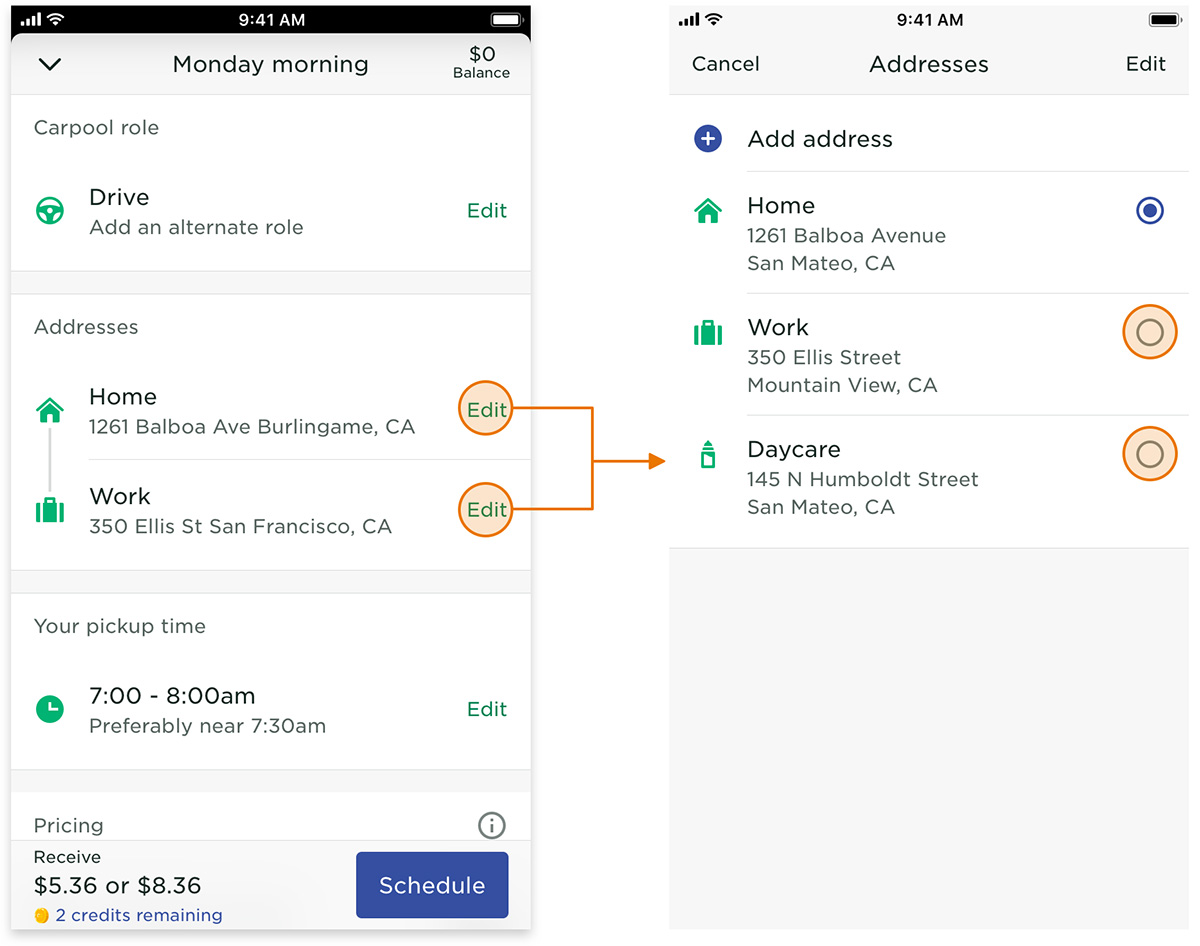Home>Finance>How Do I Change From Sole Proprietor To LLC With The IRS?


Finance
How Do I Change From Sole Proprietor To LLC With The IRS?
Published: October 31, 2023
Learn how to change from a sole proprietor to an LLC with the IRS and navigate the financial aspects of this transition to ensure compliance and optimal business structure.
(Many of the links in this article redirect to a specific reviewed product. Your purchase of these products through affiliate links helps to generate commission for LiveWell, at no extra cost. Learn more)
Table of Contents
- Introduction
- Understanding Sole Proprietorship and LLC
- Benefits of Converting to an LLC
- Steps to Change from Sole Proprietor to LLC with the IRS
- Choose a Suitable Name for Your LLC
- Obtain and File Articles of Organization
- Obtain an Employer Identification Number (EIN)
- Update Your Business Licenses and Permits
- Transfer Assets and Liabilities to the LLC
- Tax Considerations and Change in Filing Status
- Inform the IRS of the Conversion
- Conclusion
Introduction
Starting a business as a sole proprietor can be a convenient and straightforward way to get your venture off the ground. As a sole proprietor, you have complete control over your business, and all profits and losses flow directly to you. However, as your business grows and evolves, you may find that the legal and financial benefits of forming a Limited Liability Company (LLC) outweigh the advantages of operating as a sole proprietorship.
Converting from a sole proprietorship to an LLC can provide you with added protection, tax benefits, and increased credibility. It’s a process that involves several steps, including registering your LLC with the Internal Revenue Service (IRS) to ensure compliance with tax regulations.
In this article, we will explore the process of changing from a sole proprietor to an LLC with the IRS. We’ll discuss the benefits of forming an LLC, the steps involved in the conversion, and the necessary considerations when it comes to taxes and filing status.
It’s important to note that while this article offers general information, it’s always recommended to consult with a legal and tax professional before making any changes to your business structure. They can provide personalized advice based on your specific circumstances and ensure compliance with all applicable laws and regulations.
Understanding Sole Proprietorship and LLC
Before diving into the process of converting from a sole proprietor to an LLC, it’s crucial to understand the key differences between these two business structures.
A sole proprietorship is the simplest and most common form of business ownership. As a sole proprietor, you and your business are essentially one and the same. You have complete control over decision-making, and all profits and losses from the business are taxed personally on your individual income tax return. While this simplicity and flexibility may be appealing, it also means that you are personally liable for any debts or legal obligations of the business.
An LLC, on the other hand, is a separate legal entity from its owners, offering limited liability protection. This means that the personal assets of the LLC owners (known as members) are generally protected from business liabilities. In addition to liability protection, LLCs also provide potential tax advantages, flexibility in management, and enhanced credibility, especially when dealing with partners, investors, or clients.
When considering whether or not to convert from a sole proprietorship to an LLC, it’s important to assess your business’s current and future needs. If you anticipate growth, expansion, or increased liability risks, transitioning to an LLC may be a prudent choice.
However, becoming an LLC may also entail additional costs and administrative requirements. Each state has its own regulations regarding LLC formation, including filing fees, annual report filings, and ongoing compliance obligations. It’s essential to research and understand your state’s specific requirements before proceeding with the conversion process.
By converting to an LLC, you can separate your personal and business assets, limit your personal liability, and potentially take advantage of tax benefits. Additionally, the LLC structure can support future growth, facilitate partnership opportunities, and enhance your professional image.
Now that we’ve established the fundamentals of sole proprietorship and LLC, let’s explore the benefits of converting to an LLC in more detail.
Benefits of Converting to an LLC
Converting your business from a sole proprietorship to a Limited Liability Company (LLC) offers several significant advantages. By making this transition, you can unlock various benefits that can help protect your personal assets, improve your tax structure, and enhance your business’s credibility. Here are some key advantages of converting to an LLC:
- Limited Liability Protection: One of the most significant advantages of an LLC is the limited liability protection it offers. As a sole proprietor, you are personally responsible for all business debts and liabilities. In contrast, by forming an LLC, your personal assets are generally shielded from the company’s liabilities. This means that if your LLC faces legal issues or financial difficulties, your personal savings, home, and other assets won’t be at risk.
- Tax Flexibility: Converting to an LLC can provide you with more flexibility in how you manage your taxes. By default, an LLC is treated as a pass-through entity for tax purposes. This means that the profits and losses of the business “pass through” to the owners, who then report them on their personal tax returns. However, an LLC also has the option to elect to be taxed as a corporation, providing the opportunity for potential tax savings and strategic tax planning.
- Professional Credibility: Operating as an LLC can boost your business’s credibility in the eyes of customers, suppliers, and potential partners or investors. The LLC designation indicates a level of professionalism and commitment to maintaining clear legal and financial boundaries. This can provide you with a competitive edge and improve your chances of securing partnerships, contracts, and financing.
- Flexibility in Ownership and Management: LLCs offer more flexibility in terms of ownership and management structure compared to sole proprietorships. In an LLC, you can have multiple members who contribute capital or expertise to the business. Additionally, you can choose to have either member-managed or manager-managed structure, giving you more options to ensure efficient decision-making and business operations.
- Continuity and Succession Planning: An LLC has a distinct advantage when it comes to continuity and succession planning. Unlike a sole proprietorship, an LLC’s existence is not tied to the owner’s lifespan. This enables you to plan for the long-term future of the business, including the ability to pass on or sell ownership interests, bring in new members, or even dissolve the LLC in a more structured manner.
Converting to an LLC is a strategic decision that can provide both legal and financial benefits. However, it’s important to evaluate your specific business needs and consult with professionals to determine if an LLC is the right fit for you. The ease of conversion and the specific advantages may vary depending on your state’s regulations and individual circumstances.
Now that we’ve explored the benefits of forming an LLC, let’s move on to the steps involved in changing from a sole proprietor to an LLC with the IRS.
Steps to Change from Sole Proprietor to LLC with the IRS
Converting your business from a sole proprietorship to a Limited Liability Company (LLC) involves several steps to ensure compliance with IRS regulations. While the exact process may vary depending on your state’s requirements, the following general steps outline the process of changing from a sole proprietor to an LLC with the IRS:
- Choose a Suitable Name for Your LLC: Before you can proceed with the conversion, you need to select a name for your LLC that complies with your state’s naming rules. The name should be unique, not misleading, and typically include the abbreviation “LLC” or “Limited Liability Company.” You can search your state’s business name database to check for availability.
- Obtain and File Articles of Organization: The Articles of Organization (also known as Certificate of Formation or Certificate of Organization) is a document that formally establishes your LLC with the state. It typically includes details such as the LLC’s name, address, registered agent information, and the names of the members. You will need to file this document with the appropriate state authority and pay the necessary filing fees.
- Obtain an Employer Identification Number (EIN): An Employer Identification Number (EIN) is a unique identifier issued by the IRS for tax purposes. You will need an EIN for your LLC, even if you do not have employees. You can apply for an EIN online through the IRS website or by mail/fax by submitting Form SS-4. Having an EIN allows you to open a business bank account, hire employees, and fulfill your tax obligations.
- Update Your Business Licenses and Permits: As you transition from a sole proprietorship to an LLC, you may need to update your business licenses and permits to reflect the new legal structure. This may include obtaining new licenses or modifying existing ones to reflect the LLC’s name and ownership structure. Check with your local and state authorities to determine the specific requirements.
- Transfer Assets and Liabilities to the LLC: As you establish your LLC, it’s important to transfer your business assets and liabilities from the sole proprietorship to the newly-formed LLC. This may involve updating contracts, leases, and agreements to reflect the change in ownership. Consult with legal and financial professionals to ensure a smooth transfer and compliance with any contractual obligations.
- Tax Considerations and Change in Filing Status: Converting to an LLC can have implications for your tax filing status. As a sole proprietor, your business income and expenses are reported on your personal tax return. However, as an LLC, you may have different options for filing taxes, such as choosing to be taxed as a disregarded entity (pass-through taxation) or electing to be taxed as a corporation. Consult with a tax professional to determine the most advantageous tax filing method for your LLC.
- Inform the IRS of the Conversion: It’s important to inform the IRS of the conversion from a sole proprietorship to an LLC. You can notify the IRS by completing Form 8832 (Entity Classification Election) and submitting it to the appropriate IRS office. This form is used to inform the IRS of the LLC’s new tax classification. Be sure to follow all instructions and consult with a tax professional to ensure proper compliance.
It’s essential to consult with legal and tax professionals who specialize in business formations to guide you through the specific requirements and regulations in your state. Additionally, be aware that there may be additional steps and considerations beyond those outlined here, depending on your unique circumstances and local regulations.
By following these steps and ensuring compliance with IRS requirements, you can successfully change your business’s legal structure from a sole proprietorship to an LLC.
Next, we will conclude by summarizing the key points covered in this article.
Choose a Suitable Name for Your LLC
When changing your business from a sole proprietorship to a Limited Liability Company (LLC), one of the first steps is to select a suitable name for your LLC. The name you choose should comply with your state’s naming requirements and effectively represent your business. Here’s what you need to consider when choosing a name for your LLC:
Uniqueness: Your LLC’s name must be unique and distinguishable from other businesses registered with your state’s business entity division. Conduct a thorough search in the state’s business name database to ensure that your desired name is available. Keep in mind that some states also prohibit the use of certain words or phrases in business names, so familiarize yourself with any restrictions beforehand.
Relevance: Choose a name that accurately reflects your business and its main activities. Consider a name that is memorable, resonates with your target audience, and aligns with your brand identity. Avoid using overly generic names that could potentially confuse customers or hinder your ability to register trademarks in the future.
Legal Considerations: It’s crucial to comply with legal requirements when choosing your LLC’s name. Most states require that the name includes an indication of its limited liability status. This is typically done by including the abbreviation “LLC” or “Limited Liability Company” at the end of the name. Additionally, some states may have further regulations regarding the use of certain words, such as “bank,” “insurance,” or “university,” which may require additional licenses or permissions.
Domain Availability: In today’s digital world, it is essential to consider the availability of a corresponding domain name for your LLC. A domain name that matches your business name can positively impact your online presence and branding. Before finalizing your LLC’s name, check the availability of the corresponding domain name and consider securing it for your website and email purposes.
Trademark Considerations: Conducting a trademark search is advisable to ensure that the name you choose does not infringe upon existing trademarks. While registration of your LLC’s name with the state does not automatically grant you trademark protection, it’s important to avoid potential trademark disputes in the future.
Once you have chosen a suitable name for your LLC, you can proceed with the necessary legal formalities to register it with the appropriate state authorities. In some cases, you may need to reserve the name for a specified period before filing the Articles of Organization.
Remember to consult with legal and business professionals to ensure compliance with your state’s regulations and to confirm that your chosen name is suitable for your LLC.
Now that you know how to choose a suitable name for your LLC, let’s move on to the next step: obtaining and filing the Articles of Organization.
Obtain and File Articles of Organization
One of the crucial steps in changing your business from a sole proprietorship to a Limited Liability Company (LLC) is obtaining and filing the Articles of Organization. These legal documents formally establish your LLC with the state and provide important information about its structure and operations. Here’s what you need to know about obtaining and filing the Articles of Organization:
Research Your State’s Requirements: Start by researching the specific requirements for filing the Articles of Organization in your state. Each state has its own process and forms, which can typically be found on the website of the state’s Secretary of State or Business Division. Familiarize yourself with the specific information that must be included in the document, such as the LLC’s name, address, registered agent, and management structure.
Prepare the Articles of Organization: Once you understand your state’s requirements, you can begin preparing the Articles of Organization. This document serves as the foundation of your LLC and provides essential information about its structure and operation. You may choose to enlist the services of a business attorney or utilize online resources and templates to ensure completeness and accuracy.
Include Required Information: The Articles of Organization typically require the following information:
- LLC Name: Provide the chosen name for your LLC, ensuring that it complies with your state’s naming guidelines.
- Registered Agent: Indicate the registered agent who will receive legal documents on behalf of the LLC. The registered agent must have a physical address within the state where the LLC operates.
- Management Structure: Specify whether your LLC will be member-managed or manager-managed. Member-managed means that all members have the authority to participate in the management, while manager-managed means that specific individuals, known as managers, are responsible for decision-making.
- Operating Agreement: Although not always required by law, it is advisable to include information about your LLC’s operating agreement, which outlines the rights and responsibilities of its members and managers.
File the Articles of Organization: Once you have prepared the Articles of Organization and gathered the necessary information, you must file them with the appropriate state authority. This is usually the Secretary of State or Business Division. Along with the document, you will need to pay the required filing fee, which varies by state.
Wait for Confirmation: After submitting the Articles of Organization and paying the filing fee, the state will review your submission. Once approved, you will receive confirmation that your LLC has been officially formed. This confirmation may come in the form of a stamped copy of the Articles of Organization or a certificate of formation.
It’s important to note that failure to comply with state requirements or provide accurate information may result in the rejection of your Articles of Organization. To ensure a smooth process, consider consulting with a business attorney or incorporating service to assist you in preparing and filing these important documents.
With the Articles of Organization filed and confirmed, you can move forward with the next steps in the process of changing from a sole proprietor to an LLC with the IRS.
Obtain an Employer Identification Number (EIN)
Obtaining an Employer Identification Number (EIN) is a crucial step when changing your business from a sole proprietorship to a Limited Liability Company (LLC). An EIN is a unique nine-digit number assigned by the Internal Revenue Service (IRS) to identify your business for tax purposes. Here’s what you need to know about obtaining an EIN for your LLC:
Why You Need an EIN: An EIN is required for several reasons, even if you don’t have employees. It serves as the LLC’s tax ID number, allowing you to open a business bank account, file tax returns, hire employees, and fulfill your tax obligations. It is essential for separating your personal and business finances and maintaining proper records for tax purposes.
Applying for an EIN: The IRS provides different methods for applying for an EIN:
- Online: The fastest and most convenient way to obtain an EIN is through the IRS’s online application. This option is available for businesses located in the United States or its territories. The online application is user-friendly and typically provides instant issuance of the EIN upon completion.
- Mail or Fax: If you prefer not to apply online, you can complete Form SS-4, Application for Employer Identification Number, and mail or fax it to the appropriate IRS office. The processing time for mail or fax applications is generally longer, with the IRS responding within a few weeks.
- Phone: In certain circumstances, you may be able to apply for an EIN by phone. This option is typically available for businesses located in the United States and its territories. However, it’s important to check with the IRS to confirm if this option is currently available.
Required Information: When applying for an EIN, you will need to provide the following information:
- Legal name and trade name (if applicable) of the LLC
- Business address
- Nature of the LLC’s business
- Number of members in the LLC
- Primary contact information
Using a Third-Party Service: If navigating the EIN application process seems overwhelming, you have the option to use a reputable third-party service. These services can assist with the application process, ensuring accuracy and efficiency. However, remember to select a trusted service provider and be aware that there may be additional fees involved.
Keep Your EIN Secure: Once you have obtained an EIN for your LLC, it’s crucial to keep it secure and protected. Avoid sharing it with unauthorized individuals or entities to prevent identity theft or misuse.
Remember, an EIN is a unique identifier for your LLC and is separate from your personal Social Security Number (SSN). Failure to obtain an EIN or properly use it for your LLC’s tax and financial transactions can result in penalties and complications.
Now that you have obtained an EIN for your LLC, it’s time to proceed with updating your business licenses and permits to reflect the new legal structure.
Update Your Business Licenses and Permits
As you change your business from a sole proprietorship to a Limited Liability Company (LLC), it’s essential to update your business licenses and permits to reflect the new legal structure. Ensuring compliance with your state and local regulatory agencies is crucial to maintaining the legality of your operations. Here are the steps to follow when updating your business licenses and permits:
Review Your Existing Licenses and Permits: Start by reviewing your current licenses and permits to determine which ones need to be updated or renewed. This may include general business licenses, professional licenses, health or safety permits, and any industry-specific certifications.
Contact Local Agencies: Reach out to the appropriate local agencies, such as city or county offices, that issued your existing licenses and permits. Inform them of the change in your business structure and inquire about the process for updating the information. Each agency may have different requirements and procedures, so it’s important to be proactive in contacting them.
Provide Required Documentation: Prepare the necessary documentation to support the update of your licenses and permits. This may include a copy of your Articles of Organization, Certificate of Formation, or other documents that demonstrate the formation of your LLC. Some agencies may also require an updated business plan or proof of compliance with specific regulations.
Pay any Required Fees: Be prepared to pay any necessary fees associated with updating your licenses and permits. The fee amounts may vary depending on the type of license or permit and your location. Consider budgeting for these costs to ensure a smooth transition.
Update Business Documents: Along with updating your licenses and permits, make sure to revise your business documents to reflect the new legal structure. This may include updating your contracts, agreements, marketing materials, and website with the new LLC information, such as the name, registered address, and EIN.
Comply with Ongoing Requirements: Remember that updating your licenses and permits is not a one-time task. Certain licenses and permits may require ongoing renewal or compliance with specific regulations. Stay informed about the expiration dates and requirements for each license and permit, and make sure to comply with any necessary regulations to avoid penalties or negative consequences for your business.
Seek Professional Assistance: If you find the process of updating your licenses and permits complex or confusing, consider consulting with a business attorney or industry-specific consultants who can offer guidance and ensure compliance.
By taking the necessary steps to update your licenses and permits, you maintain the legality of your business operations and comply with local regulations. It demonstrates your commitment to operating as an LLC and helps avoid potential issues with regulatory authorities in the future.
Next, let’s move on to the important step of transferring assets and liabilities from your sole proprietorship to your newly-formed LLC.
Transfer Assets and Liabilities to the LLC
When changing your business from a sole proprietorship to a Limited Liability Company (LLC), it is important to properly transfer the assets and liabilities from your sole proprietorship to the newly-formed LLC. This step ensures that the LLC assumes ownership and responsibility for the business’s operations. Here are the key considerations when transferring assets and liabilities:
Identify Business Assets: Make a comprehensive list of all the assets owned by your sole proprietorship. This includes physical assets such as equipment, inventory, and property, as well as intangible assets like trademarks, copyrights, and intellectual property. Consider consulting with a professional, such as an accountant or business appraiser, to assess the value of your assets.
Transfer Legal Ownership: To transfer assets to the LLC, you will need to update the legal ownership records. This typically involves updating titles, deeds, and registrations with the relevant authorities. Consult legal professionals, such as attorneys or your state’s business services division, to ensure proper transfer of ownership for different types of assets.
Review Contracts and Agreements: Carefully review any contracts or agreements that your sole proprietorship had in place and assess the impact of the transition to the LLC. Determine if the contracts can be assigned or if new agreements need to be drafted. Notify contractual parties of the change in business structure and seek legal advice if necessary.
Transfer Permits and Licenses: Review the permits and licenses held by your sole proprietorship and identify those that need to be transferred to the LLC. Contact the issuing agencies, such as local government departments or regulatory bodies, to update the ownership information and ensure continued compliance with any regulatory obligations.
Inform Creditors and Debtors: Notify creditors and debtors about the change from a sole proprietorship to an LLC and update the necessary account information. This ensures that future liabilities and obligations are associated with the LLC rather than your personal name. Consider seeking legal advice, especially if you have outstanding loans or debts that need to be addressed during the transition.
Consider Tax Implications: Transferring assets and liabilities to the LLC may have tax implications. Consult with a tax professional to understand any potential tax consequences and to ensure compliance with tax regulations. Keep in mind that tax laws and requirements vary, so seek professional advice tailored to your specific location and circumstances.
Maintain Proper Records: Maintain accurate records of the transfer of assets and liabilities, including documentation of ownership changes, updated contracts, and any notifications or agreements made with creditors, debtors, or other relevant parties. These records are essential for legal and financial purposes and may be required during audits or future transactions.
Consult with Professionals: The process of transferring assets and liabilities can be complex, and it’s advisable to consult with legal, accounting, and tax professionals who specialize in business formations and transitions. They can provide valuable guidance and ensure that the transfer is conducted in compliance with laws and regulations.
By properly transferring assets and liabilities from your sole proprietorship to the LLC, you protect the LLC’s interests, establish clear ownership, and ensure proper legal and financial separation between yourself and the business. This step solidifies the transition and sets the foundation for the LLC’s operations and growth.
Next, let’s discuss the tax considerations and the change in filing status associated with converting to an LLC.
Tax Considerations and Change in Filing Status
When changing your business from a sole proprietorship to a Limited Liability Company (LLC), it is important to understand the tax considerations and the change in filing status that accompanies this transition. Converting to an LLC can have implications for your business’s tax structure and obligations. Here’s what you need to know:
Default Tax Classification: By default, an LLC with a single member is treated as a “disregarded entity” for tax purposes. This means that the LLC’s income, expenses, and deductions are reported on the owner’s personal tax return using Schedule C (Profit or Loss from Business). Similarly, for multi-member LLCs, the default tax classification is a partnership, where each member reports their share of the LLC’s profits and losses on their individual tax returns.
Electing Corporate Tax Classification: Alternatively, an LLC can choose to be taxed as a corporation by filing Form 8832 (Entity Classification Election) with the IRS. This election allows an LLC to be treated as a separate entity for tax purposes. Electing corporate taxation may provide certain advantages, such as potentially lower self-employment taxes for the owner and different tax deductions and benefits available to the business.
Payroll Taxes: As an LLC, you may be subject to payroll taxes if you have employees. You will need to withhold and pay employee income taxes, Social Security, and Medicare taxes. Additionally, you will be responsible for paying the employer portion of Social Security and Medicare taxes.
Sales Tax Obligations: Depending on the nature of your business and your state’s laws, you may have sales tax obligations as an LLC. Consult with your state’s tax authority to determine if you need to register for and collect sales tax from customers. Compliance with sales tax regulations is crucial to avoid penalties or legal issues.
Estimated Taxes: As an LLC owner, you may be required to make quarterly estimated tax payments to cover your income tax and self-employment tax obligations. Speak with a tax professional to determine the estimated tax amounts and stay compliant with IRS requirements.
Record Keeping: Maintaining meticulous records of your LLC’s income, expenses, deductions, and other financial transactions is essential for accurate tax reporting. Good record keeping not only ensures compliance but also helps with financial planning and allows you to claim all eligible deductions and credits.
Seek Professional Guidance: Given the complexity of tax laws and regulations, it is highly recommended to consult with a tax professional or accountant who specializes in small business taxation. They can provide personalized advice based on your specific circumstances, guide you through the tax implications of converting to an LLC, and help you optimize your tax position.
Update Tax Identification: After converting to an LLC, update your tax identification information with the IRS. If you had an Employer Identification Number (EIN) as a sole proprietor, you can continue using the same EIN for the LLC. If you didn’t have an EIN, you will need to obtain one for the LLC and update your tax filings accordingly.
Understanding the tax considerations and the change in filing status is crucial to ensure proper compliance and optimize your tax situation as an LLC. With professional guidance and careful recordkeeping, you can navigate the complexities of tax obligations and make the most of the tax benefits available to your LLC.
Next, let’s discuss the importance of informing the IRS of the conversion from a sole proprietorship to an LLC.
Inform the IRS of the Conversion
Informing the Internal Revenue Service (IRS) of the conversion from a sole proprietorship to a Limited Liability Company (LLC) is a crucial step to ensure compliance with tax regulations. Here’s what you need to know about informing the IRS of the conversion:
File Form 8832: The process begins by filing Form 8832, also known as the Entity Classification Election, with the IRS. This form notifies the IRS of the LLC’s new tax classification and provides important information about the LLC’s structure and operations. It must be filed within 75 days of the LLC’s formation, or you can choose to file it before the conversion takes effect. The form can be filed online or by mail, and it is essential to follow the instructions and provide accurate information.
Choose Tax Classification: When filing Form 8832, you will need to specify the desired tax classification for your LLC. By default, a single-member LLC is classified as a disregarded entity, while a multi-member LLC is classified as a partnership. However, if you wish to be taxed as a corporation, you can elect that option on the form. Consult with a tax professional to determine the most suitable tax classification for your specific circumstances.
Employer Identification Number (EIN): If you haven’t obtained an Employer Identification Number (EIN) for your LLC, you will need to do so before filing Form 8832. An EIN is a unique identifier for your business entity and is required for various tax purposes. You can apply for an EIN online through the IRS website or by mail or fax by submitting Form SS-4. Include the LLC’s EIN on Form 8832 when filing.
Notify the Change in Filing Status: Apart from filing Form 8832, it’s important to inform the IRS about the change in your filing status. Update your tax returns accordingly to ensure that the LLC’s income, deductions, and credits are properly reported. If you were previously using your Social Security Number (SSN) for tax purposes as a sole proprietor, you will now use the LLC’s EIN for tax filings.
Record Keeping: Maintain thorough records of all documents related to the conversion, including copies of Form 8832, any correspondence with the IRS, and updated tax returns. These records are crucial for future references and potential IRS audits.
Seek Professional Assistance: As the IRS regulations and requirements can be complex, it is advisable to seek professional assistance. Consult with a tax professional or accountant who specializes in small business taxation to ensure proper compliance and to address any specific concerns related to your LLC’s conversion.
Properly informing the IRS of the conversion from a sole proprietorship to an LLC is crucial to ensure accurate tax reporting and compliance with tax laws. By filing the necessary forms and updating your tax filings, you can avoid potential penalties and ensure a smooth transition for your business under the new legal structure.
Congratulations! You have now completed the important steps involved in changing your business from a sole proprietorship to a Limited Liability Company (LLC) with the IRS. Remember to continually review and fulfill any ongoing compliance requirements to maintain the benefits and legality of your LLC. Should you have any specific questions or concerns, consult with professionals who can provide tailored guidance based on your unique circumstances.
Conclusion
Changing your business from a sole proprietorship to a Limited Liability Company (LLC) with the Internal Revenue Service (IRS) is a significant step that offers several benefits. By converting to an LLC, you gain limited liability protection, tax flexibility, enhanced credibility, and more opportunities for growth and succession planning.
The process of changing your business to an LLC involves several important steps. It begins with choosing a suitable name for your LLC and obtaining and filing the Articles of Organization with the appropriate state authority. You will then need to obtain an Employer Identification Number (EIN) from the IRS and update your business licenses and permits to reflect the new legal structure. Next, you should transfer your assets and liabilities to the LLC and carefully manage the tax considerations and changes in filing status that come with being an LLC. Finally, it is crucial to inform the IRS of the conversion by filing Form 8832.
Throughout this process, it’s essential to seek guidance from legal, tax, and business professionals who can provide specialized advice based on your unique circumstances and ensure compliance with the IRS regulations and state requirements.
By successfully completing these steps and maintaining proper compliance, you can unlock the benefits of operating as an LLC while protecting your personal assets, optimizing your tax structure, and establishing a solid foundation for your business.
Remember, this article serves as a general guide, and it is always recommended to consult with professionals before making any decisions or changes to your business structure. They can provide personalized advice tailored to your specific needs and help you navigate the process smoothly.
Congratulations on taking the necessary steps to change your business from a sole proprietorship to an LLC with the IRS. Embrace the opportunities that come with the new legal structure and continue to grow and succeed in your entrepreneurial journey!














